Against the Grain
I was 13, the perfect age, when Jackass premiered on MTV on October 1, 2000. In those bacchanal days, from when Y2K didn’t happen until 9/11 did, my group of friends—like many middle-class American boys, I’d imagine—took the antics of these man-child fuck-ups as the closest we had to a gospel. This was how to live. By which I mean we took to living life as a nearly perpetual stream of idiocy, recording as much of it as we could on cruddy little early-gen DV camcorders. The most memorable incident involved my friend Bryan swan-diving over a fence into my backyard, missing the shrubbery that was his intended target and taking out a small shed. My father was furious. It was epic.
The infatuation wore off pretty quickly; we may have been dumb, but not so dumb as to not realize that the risk of grievous bodily harm wasn’t worth it when we were getting neither famous nor rich off of it. In the long history of young boys acting irrationally this is small potatoes. What’s maybe historically relevant is the part about recording all of it on cruddy little early-gen DV camcorders. Five years before the launch of YouTube and before any of us would make it onto Facebook (The Facebook, as it was then known), this was our education in perpetual documentation, a brief precursor to the fundamental change in lifestyle waiting just beyond the horizon at the midpoint of the 21st century’s first decade.
2005 also happened to be the year that Joe Swanberg completed his first feature, Kissing on the Mouth; he was 24. It screened at the South by Southwest Film Festival, where its presence in the lineup beside similarly tempered films—low-key looks at the mundane lives of 20-somethings drifting through their post-collegiate years—by Andrew Bujalski (Mutual Appreciation) and Mark and Jay Duplass (The Puffy Chair) led to the unfortunate coinage of “mumblecore” as the descriptor for a new generation of American DIY filmmaking.
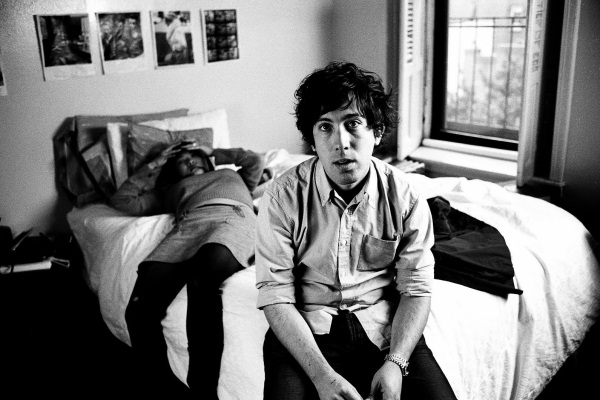
Justin Rice in Mutual Appreciation
The worth of these works, by Swanberg, the Brothers Duplass, and Bujalski, as well as Frank V. Ross, Aaron Katz, and Kentucker Audley, has been sufficiently debated over the past seven years. In short, they’re either miserable expressions of bourgie, white privilege or essential documents from the dawn of a new era of personal art. Regardless of whether one finds them banal or profound—or even holds the more reasonable position that they’re both, generally within the same movie, or scene, or shot—they’re unmistakably the products of minds shaped by the new normal of perpetual recording, abetted by the earliest waves of affordable digital recording. (Of the directors listed above, Bujalski’s the odd duck for shooting on 16mm.) If life is going to be a stream of YouTube videos and Facebook photos, why not just take the extra half-step and turn it into a feature-length movie?
As the technological curve steepens, the distance between consumer recording and professional filmmaking narrows. The aesthetic gap that once separated the “reality” of these DIY features—blown-out whites, muddily saturated colors, pixels dancing in the low light, etc.—from the too-clear clarity of the mainstream features they were offering an alternative to (or reacting against) is now gone. I can scroll through my Facebook feed and find a dozen pictures that could be promo shots for some new cable reality show or drunken missives from last night out on the town. For their part, most of the first generation of m-core directors have moved into higher resolutions, giving up the ghost of transparent reality—of cinema = life—to explore new directions in form (shooting in HD Swanberg has gone from almost exclusively handheld footage to an increasingly still camera) and content (like Aaron Katz’s genre experiment Cold Weather).
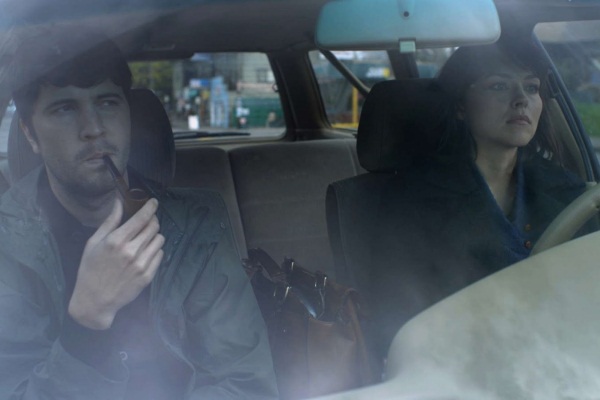
Raúl Castillo and Trieste Kelly Dunn in Cold Weather
But something else is happening. As digital photography grows ever sharper, the kids have suddenly turned . . . atavistic? As film-film shrank to the most secluded corners of the art world and the avant-garde film community, there were of course always old-school believers, those who insisted on Polaroids over cellphone cameras. Their resistance was finally defeated when the Instagram app launched in late 2010, its digital filters drawing in users by the square, amber-hued millions. Has my generation suddenly grown nostalgic for a technology it hardly ever knew to begin with?
Maybe. In his Retromania: Pop Culture’s Addiction to Its Own Past, cultural critic Simon Reynolds repeatedly returns to variations on the notion that a central fact of the digital age is the amount of old stuff it has made widely available. A 19-year-old—to clarify, that person was born in 1993—can now very easily hop on Tumblr and drown in a sea of woozy, enchanting old photographs; images that are fascinating because they aren’t the world, or the images of the world, we know. (How quickly we all got bored with all those images of our mundane realities.) The colors are diffuse and lush rather than concentrated; every element in the frame bleeding into the next rather than sharply detailed; the texture of smooth, round grain rather than jagged pixels. She can then just as easily turn on Instagram and more or less replicate this vibe.
In an article for ARTINFO on the occasion of the Museum of Modern Art’s retrospective of the films of German underground great Werner Schroeter, J. Hoberman traced a brief history of 16mm film, “the basis for much of the 20th century’s greatest cinema.” After running through some recent examples in the world of narrative film (the tradition of 16mm in the avant-garde is so rich that its extension into the digital age seems only logical) that include Vincent Gallo’s The Brown Bunny (his sadly self-repressed Promises Written in Water was also shot on 16mm), Bujalski’s three features, and Alex Ross Perry’s recent pair of critical hits, Impolex and The Color Wheel, Hoberman concluded: “These days, you have to be willfully retro to work in 16mm.”
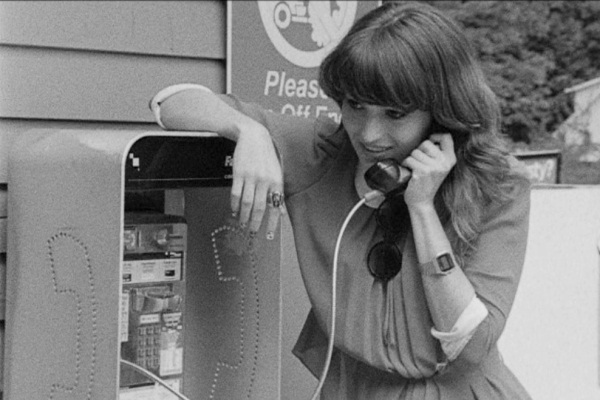
Carlen Altman in The Color Wheel
So, then: What’s really the appeal of the aesthetics of film photography? And why exactly would anyone shoot a feature film on 16mm in the year 2012?
Answers to both of those might be found at 92Y Tribeca’s inaugural, recently concluded La Di Da Film Festival, an appropriately bite-sized selection of recent independent films from the post-mumblecore world. The two obvious highlights, Amy Seimetz’s Sun Don’t Shine and Maiko Endo’s Kuichisan, are both 16mm productions that continue the recent wave that includes Perry and Bujalski’s films, as well as the 16mm work of Ronald Bronstein, Josh and Benny Safdie (whose The Black Balloon, shot on HD video and transferred to 35mm, was also shown), and Azazel Jacobs.
Sun Don’t Shine and Kuichisan, in addition to being the best directorial debuts of this year and last, offer two paths away from the low-key drift of the last decade’s dominant mode of indie filmmaking. Seimetz’s film, with its doomed, beautiful lovers (Audley and the axiomatic Kate Lyn Sheil) on the lam, pushes toward an expression of the barely suppressed discontent at the heart of the American South that no one this side of Harmony Korine is really willing to acknowledge. This is manifest in sufficiently violent emotional and physical gestures—the film begins in the midst of a roadside fight—which are only deepened by their contrast with Audley’s boyish, reticent charm and Sheil’s aloof allure (the explosive quality lurking behind her round face, flushed cheeks, and downturned eyes has never been put to better use). The film’s crazy rhythm, with its sudden shifts from rolling, liquid images of Florida’s natural beauty (or, occasionally, its unnatural garishness) to brief moments of intense confrontation, the kind that seem to demand that time itself stop moving forward and take notice, matches the tension brought out by the performances. Its typical movement flows forward in a way that’s ideal for the diffuse quality of 16mm, with each confrontation breaking in and working, literally, against the grain. (The use of 16mm also let Seimetz, as she noted in a recent Cineaste interview with La Di Da curator Miriam Bale, shoot in the harsh light of high noon without washing the image out, allowing her to make a film that joins God’s Little Acre as the muggiest I’ve ever seen.) It is, as Ignatiy Vishnevetsky has rightly noted, a film that’s fully achieved “a unity of camera style, acting style, editing style, and narrative rhythm.”
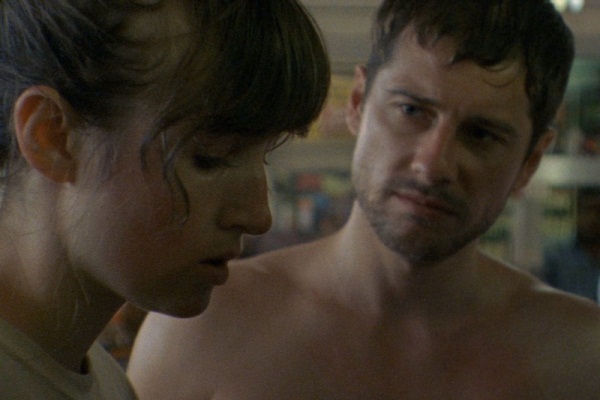
Kate Lyn Sheil and Kentucker Audley in Sun Don't Shine
In contrast to Sun Don’t Shine and its embrace of classically powerful performance, Kuichisan moves entirely to the opposite pole, removing any semblance of character and shaping itself around the movement of two individuals, a young Japanese boy and an American woman, as they wander around a town on Okinawa. It’s a film that takes the mingling of elements in each of its 16mm frames and applies that quality to its whole, as shots and scenes bleed into one other. In this, it shares a certain dreaminess with moments from the work of Apichatpong Weerasethakul, an effect largely dependent on the lack of specificity afforded by 16mm, its ability to register a shape, a form, a body without definitely rendering it, leaving, or maybe creating, an aura that hangs over the image. It’s this aura that ties together the perspective of a young boy who’s decided that the world is ending and a woman who’s obviously very far from home (Endo emigrated from Tokyo to New York in 2000, and continued to work here until she was forced out of the country by visa issues a few years ago). Perhaps that’s nostalgia, but if it is, it’s nostalgia in the old, deeply felt sense, a phenomenon that’s far removed from fashion, from the currency of trends, from cultural cannibalism (or necrophagia). It’s a terrible desire for a world that’s slipped, or at least is slipping, away. The process of making this movie, of following these two conduits as they search the world for who knows what, is its own act of love, of resistance against this slipping away; it’s the discovery and creation of an object of beauty, which might have been what they were looking for all along.
The woman in Kuichisan is Eléonore Hendricks, whose extraordinarily sharp face more than slightly recalls Barbara Loden’s, whose Wanda is something of a totem for the recent wave of 16mm filmmakers. Hendricks also starred with Audley in Dustin Guy Defa’s Bad Fever, a hazy take on the sort of liminal character studies that studded American cinema in the ’70s (it comes closer to approximating the visual tone of 16mm than any recent digital film), and she appears as one of the many souls who drifts into the path of the Safdies’ Black Balloon (as well as Josh’s first feature, The Pleasure of Being Robbed). The Safdies’ debut as a duo was Daddy Longlegs, another liminal character study, starring Ronald Bronstein as a nearly deadbeat dad. Bronstein’s own Frownland was one of the most startling debuts of the last decade, yet another liminal character film—that really is one of the key continuities here—shot through such thick grain that every frame has a mossy, obscured quality that mirrors its central character’s struggle to get outside of his head. Frownland was photographed by Sean Price Williams, whose work as cinematographer also includes Kuichisan and both of Alex Ross Perry’s features. I offer this little family tree, which is by no means exhaustive, simply as evidence that there is a shared, communal approach at work here as strong as any in the history of American independent film.
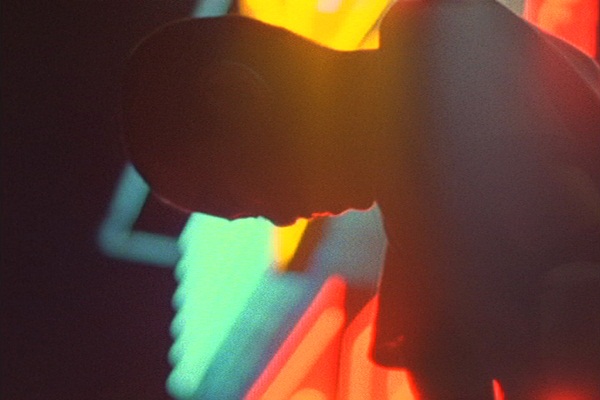
Kuichisan
Given this many artists working in this many different directions—I would be hard-pressed to name two recent films with more radically distinct worldviews than Kuichisan and The Color Wheel—yet united by a shared interest in the options afforded by 16mm film, it seems unfair to reduce these decisions to, “These days, you have to be willfully retro to work in 16mm.” Perhaps for some of their audience—maybe even for most: Hoberman quotes an e-mail from an editor at Cahiers du cinéma to Dennis Lim for a New York Times piece praising The Color Wheel for “[reminding] us of a New York independent cinema that we loved”—the appeal is purely backwards looking. But speaking only for myself, as someone who grew up digital, the turn back to 16mm seems not at all a matter of wishing to return to an idyllic past I never knew, but of exploring its options, of revisiting what hasn’t yet been exhausted and seeing what work is left to be done. If the best of the mumblecore films succeeded at exploring the cultural process of reckoning with our new mediated lives, then this wave of 16mm filmmaking really does the work that a tool like Instagram only feigns: it brings artifice back to life in the full depth of its expressive possibilities. ![]()
LATEST ARTICLES
-20140814-173707-thumb3.jpg)
Fighting Words
by Imogen Sara Smith
posted August 12, 2014

Fighting Words, Part 2
by Imogen Sara Smith
posted August 20, 2014

On the Margins: The Fil…
by Andrew Chan
posted August 12, 2014

Robin Williams: A Sense…
by David Schwartz
posted August 12, 2014
 Against the Grain
Against the Grain
THE AUTHOR
Phil Coldiron is a writer and programmer living in Brooklyn.
More articles by Phil Coldiron
